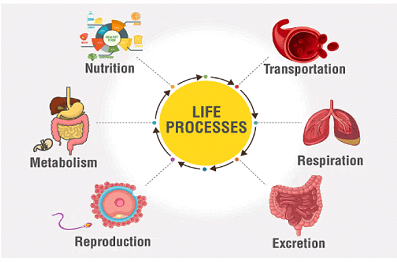What is rancidity class 10
Causes, Effects, and Prevention Methods
What is Rancidity?
Rancidity is a chemical process that causes oils, fats, and foods containing them to develop an unpleasant smell and taste. This deterioration happens when these substances are exposed to certain environmental factors, leading to their decomposition and the formation of new compounds with disagreeable odors and flavors.
Have you ever opened a packet of potato chips that tasted stale or noticed that the butter in your refrigerator had a strange smell? These are everyday examples of rancidity that most of us have encountered.
Common Examples of Rancidity
- Stale potato chips or other snack foods
- Spoiled cooking oils with an off smell
- Butter that has developed a strange odor
- Nuts that taste bitter after being stored for too long
- Spoiled milk and dairy products
Types of Rancidity
There are primarily two types of rancidity that occur in fats and oils:
1. Hydrolytic Rancidity
Hydrolytic rancidity occurs when triglycerides in fats or oils are hydrolyzed, resulting in the formation of free fatty acids. This reaction is catalyzed by enzymes like lipase or by heat and moisture.
Chemical Process:
Triglyceride + Water → Glycerol + Free Fatty Acids
The free fatty acids formed can have unpleasant odors and flavors, especially in dairy products.
2. Oxidative Rancidity
Oxidative rancidity is more common and occurs when the double bonds in unsaturated fatty acids react with atmospheric oxygen. This reaction forms hydroperoxides which subsequently break down into shorter-chain compounds such as aldehydes, ketones, and carboxylic acids – all contributing to off-flavors and odors.
Chemical Process (simplified):
Unsaturated Fat + O2 → Hydroperoxides → Aldehydes, Ketones, Acids
This is why oils high in unsaturated fats (like vegetable oils) are more prone to rancidity than saturated fats.
Factors Affecting Rancidity
Several factors can accelerate the process of rancidity:
1. Exposure to Air (Oxygen)
The more a fat or oil is exposed to air, the faster oxidative rancidity will occur. This is why tightly sealed containers help preserve foods.
2. Light
Light, especially UV light, can accelerate oxidation reactions. This is why many oils are sold in dark or opaque containers.
3. Heat
Higher temperatures increase the rate of both oxidative and hydrolytic rancidity. Refrigeration slows down these processes.
4. Moisture
Water can promote hydrolytic rancidity by enabling the hydrolysis of triglycerides into fatty acids.
5. Metal Ions
Certain metal ions (particularly iron and copper) can catalyze oxidation reactions, accelerating rancidity.
6. Degree of Unsaturation
The more double bonds (unsaturation) in fatty acids, the more susceptible they are to oxidative rancidity.
Chemistry Behind Rancidity
Mechanism of Oxidative Rancidity
Oxidative rancidity is a free-radical chain reaction that occurs in three stages:
1. Initiation:
RH (Unsaturated fat) → R• (Free radical) + H•
This is often triggered by heat, light, or metal ions that cause the initial formation of free radicals.
2. Propagation:
R• + O2 → ROO• (Peroxy radical)
ROO• + RH → ROOH (Hydroperoxide) + R•
The cycle continues as each new free radical can react with more unsaturated fats.
3. Termination:
R• + R• → R-R (Stable product)
R• + ROO• → ROOR (Stable product)
ROO• + ROO• → ROOR + O2
Eventually, free radicals combine to form stable products, but by then, significant damage has already occurred.
Exam Tip:
Understanding the free-radical mechanism of oxidative rancidity is important for exams. Remember that this is a chain reaction with three distinct phases (initiation, propagation, termination) and that each step produces compounds that contribute to the unpleasant odor and taste.
Real-Life Examples of Rancidity
1. Potato Chips and Snack Foods
When potato chips become stale and develop an unpleasant taste, it’s due to oxidative rancidity of the oils used in frying them. The large surface area of chips exposes more oil to air, accelerating the process.
2. Cooking Oils
Vegetable oils, especially those high in polyunsaturated fats like soybean or sunflower oil, can become rancid even in sealed bottles if stored improperly (exposed to light or heat).
3. Butter and Margarine
The “refrigerator taste” that butter sometimes develops is a form of rancidity, which occurs when the milk fat oxidizes or hydrolyzes.
4. Nuts and Seeds
Nuts like walnuts, which are high in unsaturated fats, can develop a bitter taste when rancid. This is why they’re often best stored in the refrigerator.
Health Concerns
Consuming rancid foods is generally unpleasant but can also have health implications:
- The compounds formed during rancidity (like aldehydes) can be harmful if consumed in large quantities
- Rancid foods have reduced nutritional value as vitamins like A, D, E, and K may be destroyed
- Some studies suggest that compounds in rancid foods might contribute to long-term health issues
Preventing Rancidity
Understanding how to prevent rancidity is crucial both from scientific and practical perspectives. Here are key methods used to prevent or slow down rancidity:
Use of Antioxidants
Antioxidants are compounds that can donate hydrogen atoms to free radicals, terminating the chain reaction of oxidative rancidity. They’re widely used in food preservation.
Natural Antioxidants:
- Vitamin E (tocopherols)
- Vitamin C (ascorbic acid)
- Carotenoids
- Flavonoids from plants
Synthetic Antioxidants:
- BHA (butylated hydroxyanisole)
- BHT (butylated hydroxytoluene)
- TBHQ (tertiary butylhydroquinone)
- Propyl gallate
How Antioxidants Work:
AH (Antioxidant) + R• → A• + RH
The antioxidant radical (A•) is much more stable and less reactive than the lipid radical (R•), effectively stopping the chain reaction.
Proper Packaging
Reducing exposure to oxygen through:
- Vacuum packaging
- Modified atmosphere packaging (replacing oxygen with nitrogen or CO2)
- Using oxygen barrier materials
- Opaque containers to block light
Refrigeration and Freezing
Lower temperatures slow down chemical reactions, including those responsible for rancidity. This is why many oils and fats last longer when refrigerated.
Removing Pro-oxidants
Eliminating factors that accelerate oxidation:
- Metal ion chelators like EDTA bind metal ions
- Filtering oils to remove impurities
- Avoiding metallic containers for fats and oils
Hydrogenation
Converting unsaturated fats to saturated fats makes them less susceptible to oxidation. However, this process can produce trans fats, which have health concerns.
Practical Tips to Prevent Rancidity at Home
- Store oils in cool, dark places in tightly sealed containers
- Refrigerate nuts, whole grain flours, and other foods high in unsaturated fats
- Buy smaller quantities of oils and fats to ensure freshness
- Look for oils packaged in dark glass or opaque containers
- Keep dried foods like potato chips sealed tightly to minimize air exposure
Detecting Rancidity
There are several methods used to detect and measure rancidity in foods and oils:
| Method | Description | What It Measures |
|---|---|---|
| Peroxide Value (PV) | Measures the concentration of hydroperoxides in the fat or oil | Early stages of oxidative rancidity |
| Thiobarbituric Acid (TBA) Test | Reacts with malondialdehyde, a secondary oxidation product | Advanced stages of oxidative rancidity |
| Anisidine Value (AV) | Measures secondary oxidation products (aldehydes) | Later stages of oxidative rancidity |
| Free Fatty Acid (FFA) Value | Measures the amount of free fatty acids present | Hydrolytic rancidity |
| Sensory Evaluation | Using trained tasters to detect off-flavors and odors | Overall rancidity from a consumer perspective |
Exam Tip:
Remember that different analytical methods detect different stages of rancidity. For example, peroxide value is good for the early stages of oxidation, while anisidine value measures later stages. This distinction might appear in multiple-choice questions!
Rancidity and the Food Industry
Rancidity is a major concern in the food industry for several reasons:
Economic Impact
Rancidity leads to product waste, reduced shelf life, and consumer complaints, all of which affect a company’s bottom line.
Quality Control
Food manufacturers use various analytical methods to monitor and prevent rancidity during production and storage.
Formulation Challenges
Creating products with extended shelf life while maintaining clean labels (minimal additives) is a constant challenge.
Packaging Innovation
The industry continuously develops new packaging technologies to protect products from oxygen, light, and other factors that promote rancidity.
Exam-Focused Summary: Key Points to Remember
- Definition: Rancidity is the decomposition of fats, oils, and other lipids through oxidation or hydrolysis, resulting in unpleasant tastes and smells.
- Types: The two main types are oxidative rancidity (reaction with oxygen) and hydrolytic rancidity (reaction with water).
- Mechanism: Oxidative rancidity is a free-radical chain reaction occurring in three phases: initiation, propagation, and termination.
- Factors: Key factors that accelerate rancidity include exposure to oxygen, light, heat, moisture, metal ions, and the degree of unsaturation in the fat.
- Prevention: Methods to prevent or slow rancidity include antioxidants (natural and synthetic), proper packaging, refrigeration, and reducing exposure to pro-oxidants.
- Detection: Common tests include peroxide value, anisidine value, TBA test, and free fatty acid measurement.
- Consequences: Rancidity reduces nutritional value, creates unpleasant sensory attributes, and may have health implications.
- Real-world examples: Stale potato chips, spoiled cooking oils, and nuts with a bitter taste are all examples of rancidity in everyday life.
Common Exam Mistakes to Avoid:
- Confusing oxidative and hydrolytic rancidity mechanisms
- Failing to recognize the role of antioxidants in preventing rancidity
- Not understanding the differences between primary and secondary oxidation products
- Overlooking the relationship between a fat’s degree of unsaturation and its susceptibility to rancidity
Practice Questions
1. Which of the following oils would be most susceptible to oxidative rancidity?
- Coconut oil (high in saturated fats)
- Olive oil (high in monounsaturated fats)
- Flaxseed oil (high in polyunsaturated fats)
- Fully hydrogenated vegetable oil
Answer: c. Flaxseed oil (high in polyunsaturated fats)
Explanation: Oils with higher degrees of unsaturation (more double bonds) are more susceptible to oxidative rancidity. Polyunsaturated fats have multiple double bonds and are therefore most vulnerable.
2. Which of these compounds acts as an antioxidant to prevent rancidity?
- Acetic acid
- Sodium chloride
- Vitamin E (tocopherol)
- Calcium carbonate
Answer: c. Vitamin E (tocopherol)
Explanation: Vitamin E is a natural antioxidant that can donate hydrogen atoms to free radicals, breaking the chain reaction of oxidative rancidity.
3. What is the primary chemical change occurring during hydrolytic rancidity?
- Formation of aldehydes from fatty acids
- Breaking of triglycerides into glycerol and free fatty acids
- Conversion of unsaturated fats to saturated fats
- Formation of ketones from glycerol
Answer: b. Breaking of triglycerides into glycerol and free fatty acids
Explanation: Hydrolytic rancidity involves the hydrolysis (reaction with water) of triglycerides to produce glycerol and free fatty acids, often catalyzed by enzymes or heat and moisture.



